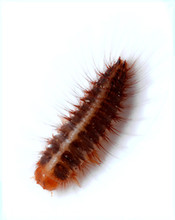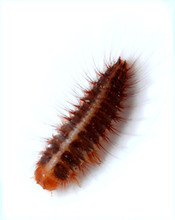Answer

Nov 15, 2021 - 05:02 AM
Our Dermestid larvae colonies are a combination of ater, lardarius, and maculatus. Depending on the time of year, one of the three predominates our colonies. Right now it is nearing winter, and without a lot of decaying material available, it is lardarius that is the predominant species.
For skull cleaning, we are recommending using Buffalo Beetles (Alphitobius diaperinus), which are MUCH more hardy and breed more readily than Dermestid beetles.
If you have any sensitivity to, or allergy to insects though then they are not recommended.
We recommend removing as much skin and soft tissue as possible first (eyes, tongue, brains) to reduce the smell during the process. It can be quite overwhelming! Letting your skull sit outside for a day after soft tissue removal to let the remaining tissues dry will help as well.
For a small animal skull, 500 is appropriate, for a larger animal skull (e.g. bear/deer) 1000 to 2000 would be required. For an entire carcass of a very large animal, we recommend purchasing between 1 and 2 thousand per pound.
![[RAINBOW MEALWORMS]](https://cdn2.bigcommerce.com/server700/236bd/product_images/uploaded_images/ask-us-a-question.png?t=1555860964&_ga=2.63975151.1964021392.1553523198-536666054.1553523198)




Add New Comment